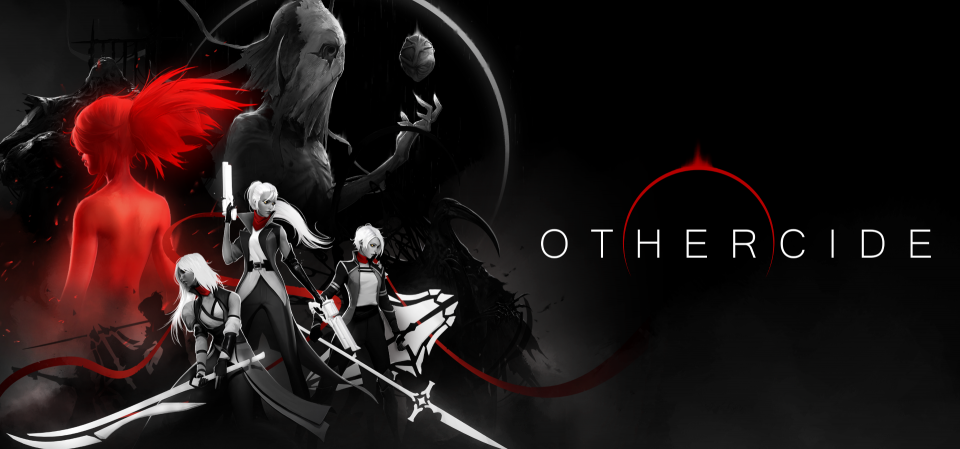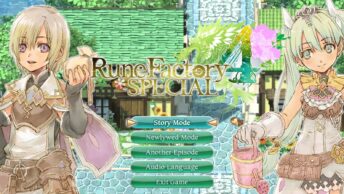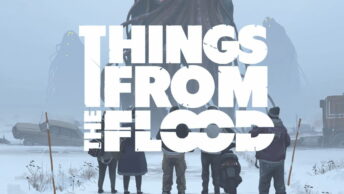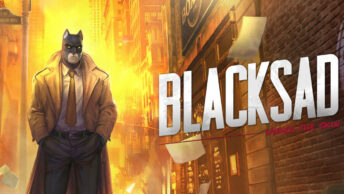This is what happens when XCOM is set in a dark, horrific world full of angelic women and hideous creatures.
Type: Single-player
Genre: Strategy, Roguelike
Turn-Based Tactics
Developer: Lightbulb Crew
Publisher: Focus Home Interactive
Release date: 27 Jul, 2020

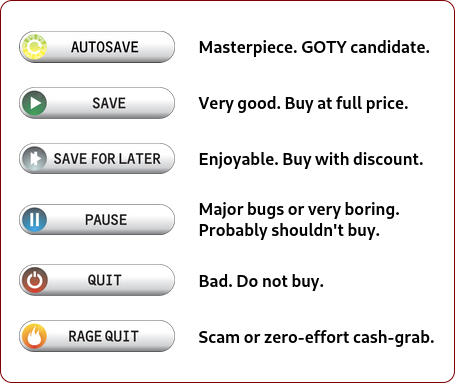
Intro
An XCOM-like isometric tactical game set in a dark, gothic world with an interesting visual style of grey and red. We get to control the daughters – numerous clones of a powerful female warrior that perished in battle against evil that has spread all over the world. The daughters are powerful but expendable, all ready to die for the greater good.
Story and Setting
The story is set in what looks like a dark fantasy, post-apocalyptic world. Everyone is dead and only hideous nightmarish creatures roam about. The story revolves around a battle of good vs evil, what appears to be on a spiritual plane of existence, with the Mother and Daughters fighting for a sense of order and justice, while many nasty things filling this world being results of corrupted people and all the suffering that was unleased on the world.
We often see flashbacks and can piece the backstory together based on the major figures we come across, particularly the bosses, all of whom played a part in causing this evil to spread. A lot of the story can seem rather cryptic and some of it can be up to interpretation. However, the story here is mainly to service the gameplay and to create a backdrop for all our battles.
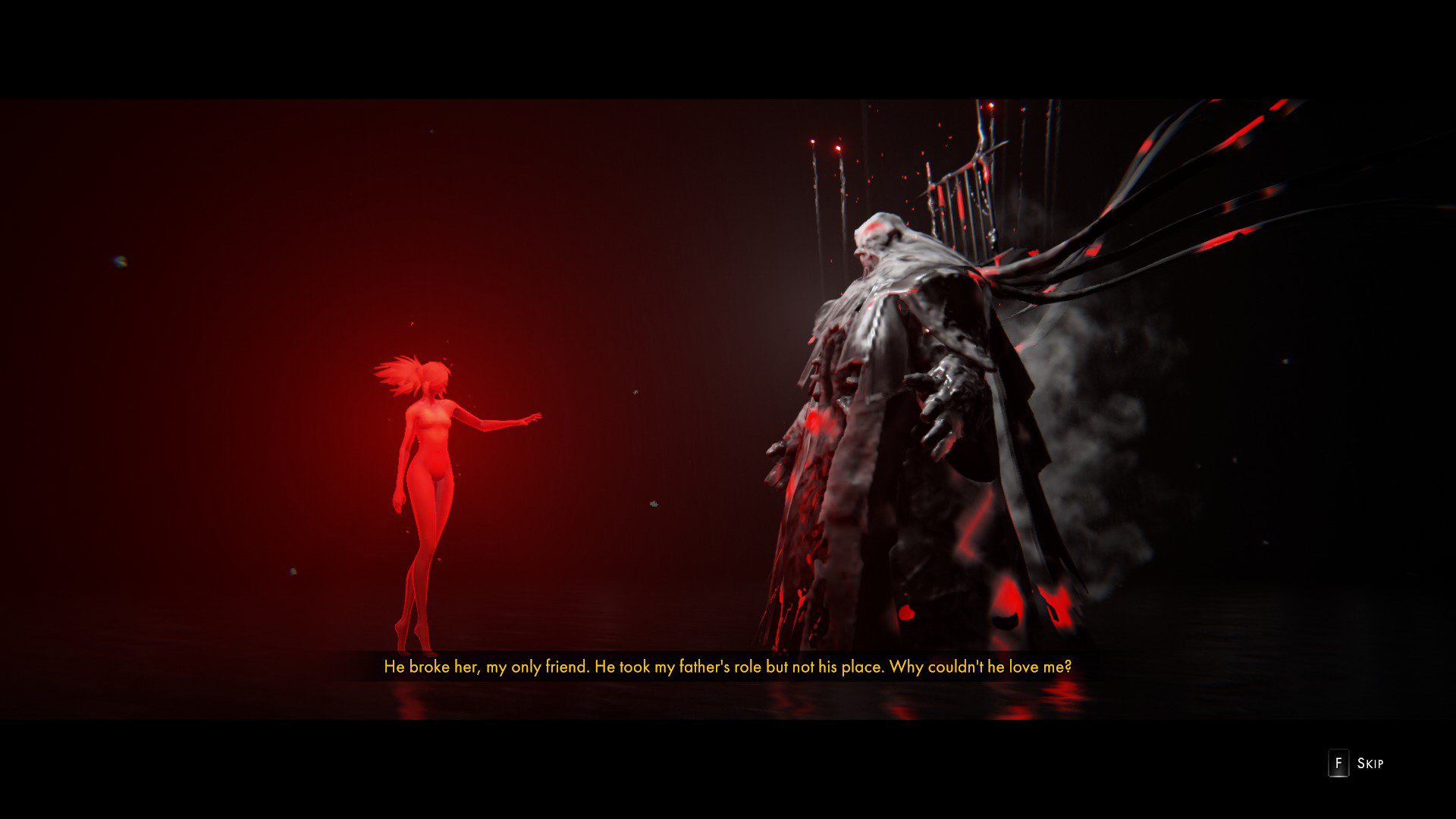
Gameplay
At first glance the gameplay is very XCOM-like, with the isometric grid and turn-based tactics involving action points. However, there are many new and unique gameplay elements of its own that make Othercide so intriguing.
One of the big aspects of gameplay during combat encounters are the reactions and interruptions. While in XCOM and a few other similar games, we had an overwatch feature to respond to enemy entering our character’s cone of vision, Othercide takes this concept and develops it further. The daughters can learn a number of skills that allow them to respond to specific things. Interruptions have them respond to enemy attacks against allies, causing a counter that cancels the enemy attack and deals damage to the enemy instead. Reactions all differ, but usually they respond to things such as an enemy in range taking damage or getting within melee range of the unit, or could even be happening when the unit itself receives a buff from an ally. These reactions and interruptions can be fun to string together and let us deliver some free hits on the enemies in between turns.
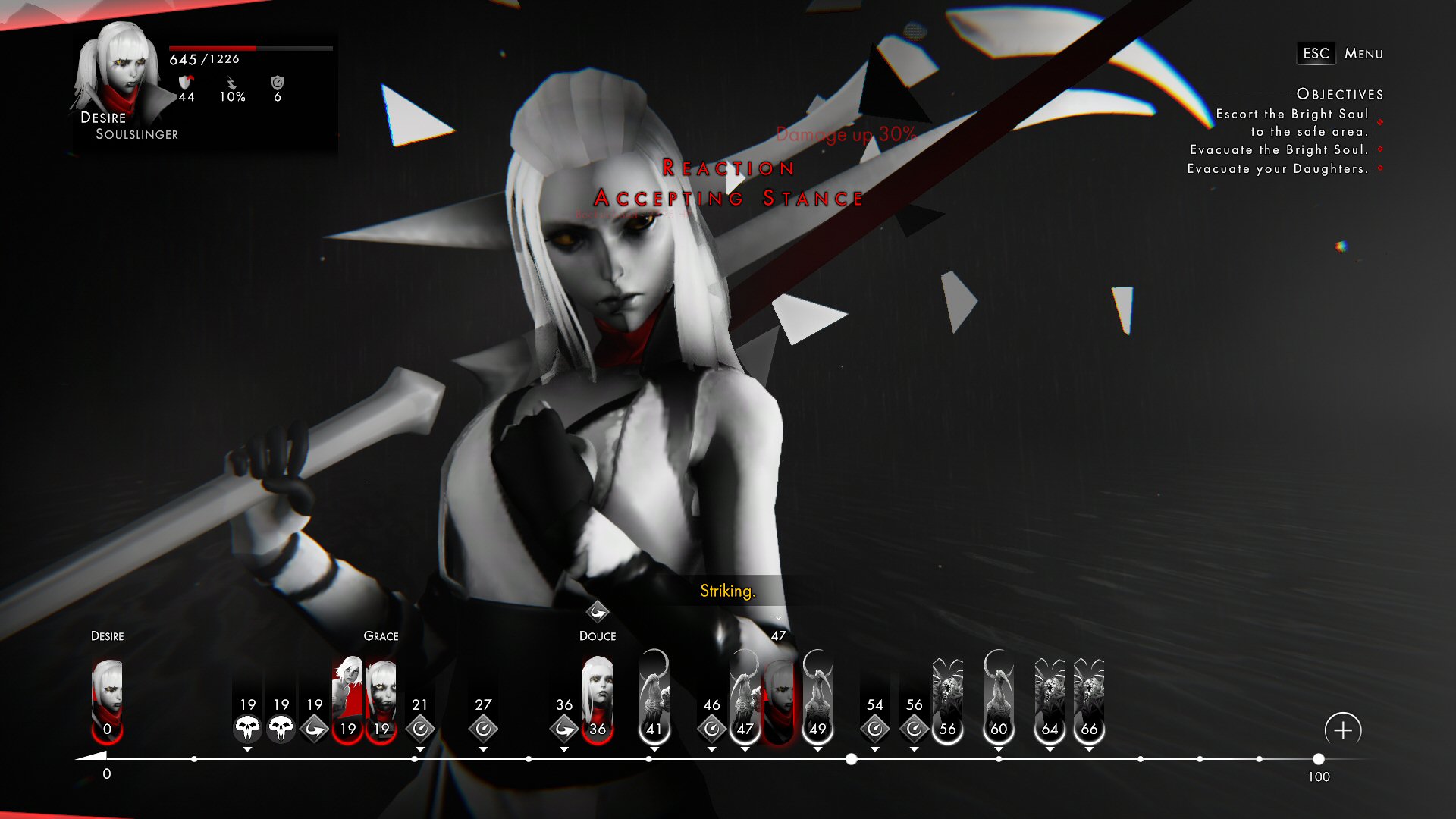
The daughters come in 3 classes in the beginning: 1) Blademasters, who get upclose to deal colossal melee damage but lack on defence, 2) Soulslingers, who use guns to attack from range and offer supporting fire to other daughters, and 3) Shieldbearers, who specialise in tanking damage and protecting their allies. Halfway through the game we also unlock the 4th class – Scythedancer, who use a scythe to deal some area attacks and debuff enemy defences. Each of the classes learns new skills at certain level ups, and just like with XCOM, we are given a choice of two skills at each of these points, so not every daughter of the same class needs to have identical skill setup.
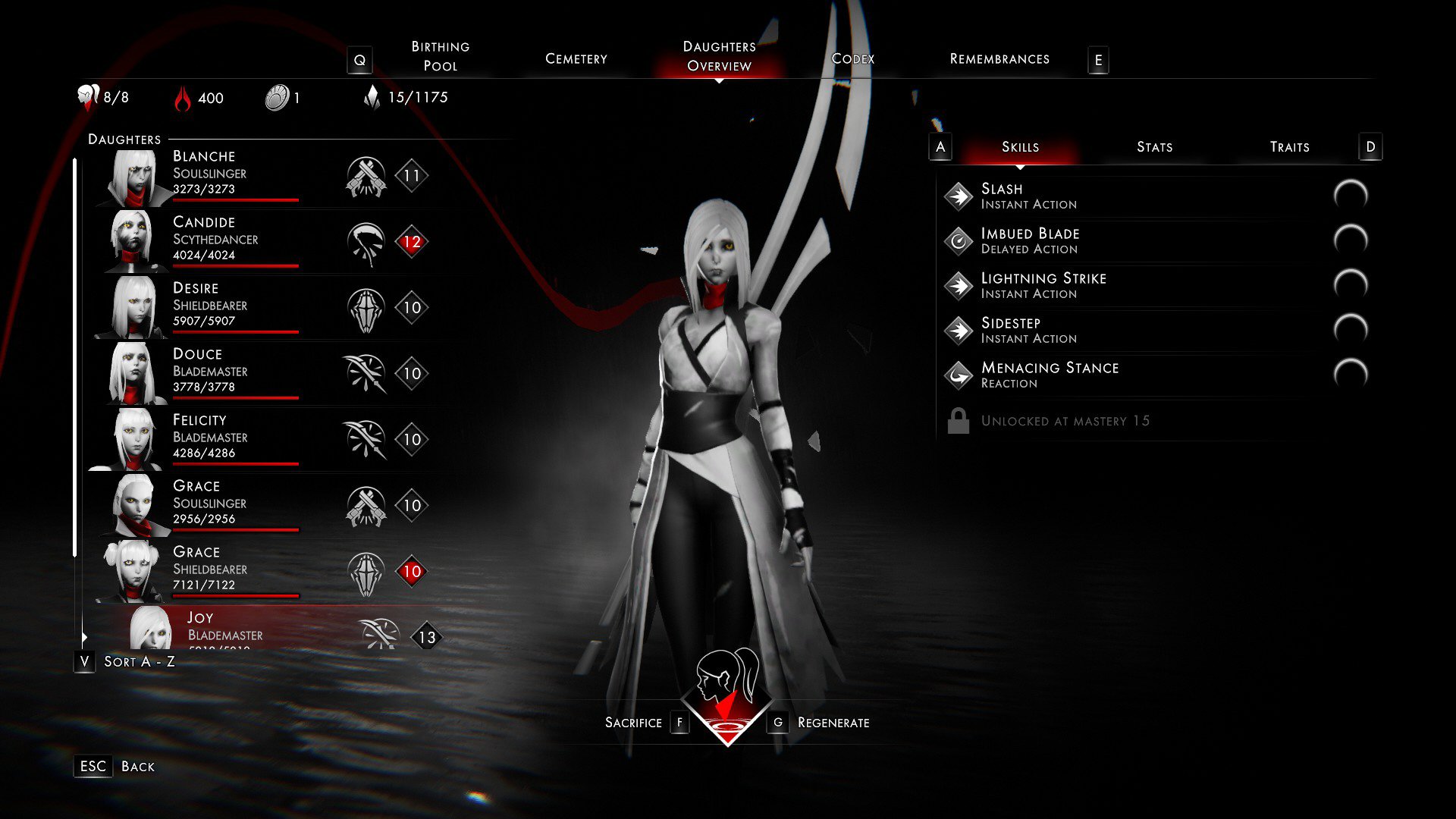
During the missions, we acquire memories which we can equip to the skills of our daughters. These act as buffs that give an additional effect to these skills, such as debuffing enemy armour, delaying their turn, increasing critical rate, or simply dealing some extra damage.
For each in-game day, we can do a few missions. The missions come in a handful of different types: to hunt and kill all enemies, to survive for as a certain amount of time, to escort someone, and so on. They are generally very much alike throughout the entire game, and only change the enemies and some locations. We can take anywhere from 1 to 4 daughters on the missions, depending on how many the mission allows. But once a daughter has been on a mission, she can’t go on another mission until the next in-game day. After a few in-game days, we can face a boss. Each boss is a guardian of a certain era, and there are 5 eras in total. Once the boss of one era is beaten, we move on to the next era.
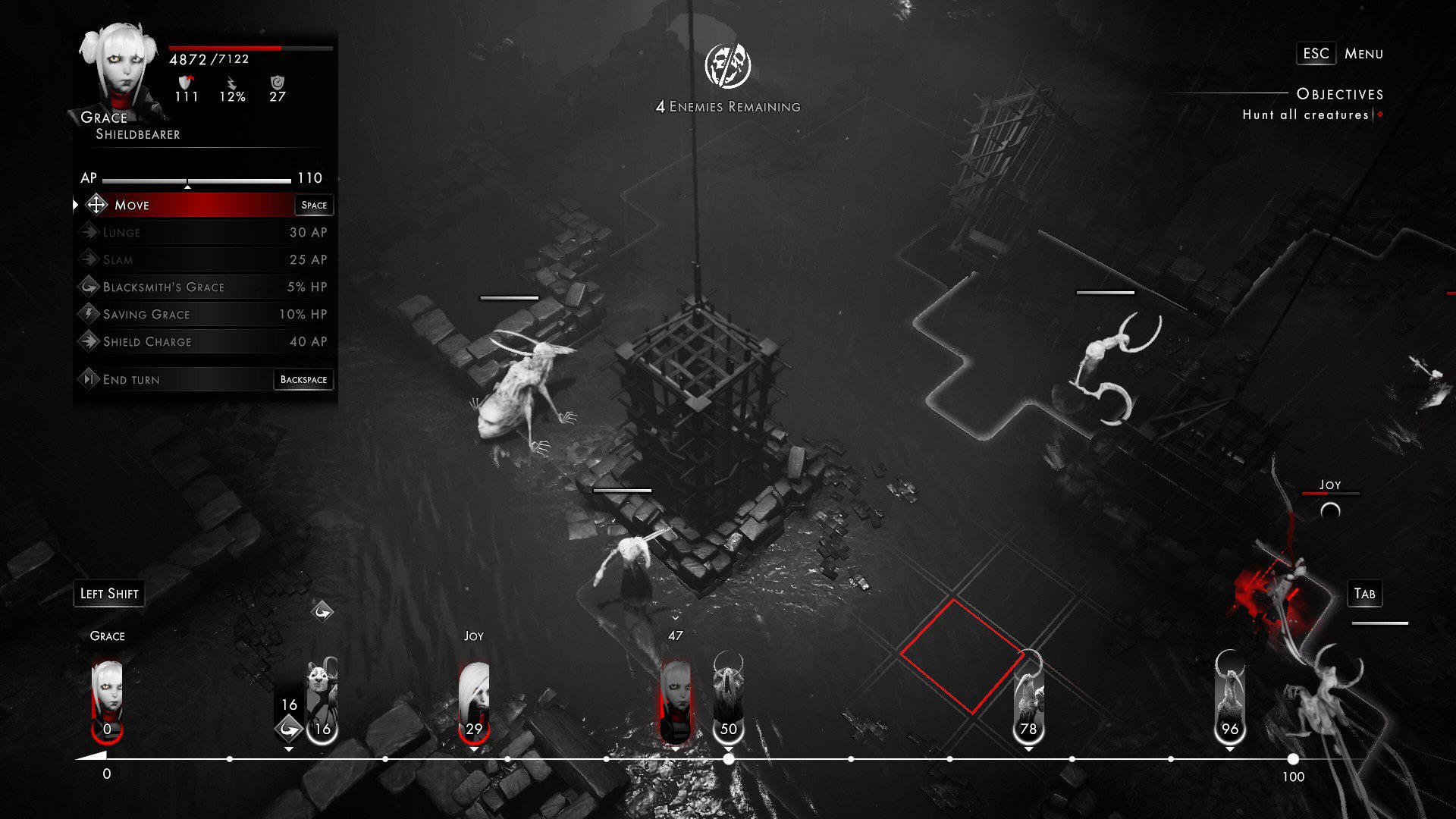
One really intriguing mechanic this game implements is the idea of recollections. The game puts us at a huge disadvantage at all times and expects us to lose a run from time to time. When we no longer have enough daughters to take on missions because they all got killed or if we lose to a boss, we begin a new recollection with all the existing bonuses and unlocks. So, upon restarting a run from day 1, we can resurrect any of our fallen daughters and spend acquired crystal points to get bonuses that make us stronger. We then push this recollection as far as we can, and then start over again with even better bonuses. Some bonuses do allow us to skip the eras we’ve done already, so if we choose to go for those, we don’t have to start from the very beginning each time.
This recollections mechanic is interesting, but it can give an impression of being grindy. It expects repetition of the same, which can be offputting, although it is certainly better than simply starting a new run from scratch with no progress.
We also have the option to sacrifice any daughter in order to heal up and boost another of equal or lower level. I found myself never using this mechanic and am personally not a fan of it. I recently played another game that also used it, Alder’s Blood, and I ignored this mechanic there too. It just causes more grinding than necessary.
When in combat, each daughter has action points (APs) to spend on her turn. 100 APs is the default, although this amount can be increased with passive bonuses. We can choose to use as many of the available action points as we want in a turn, depending on the skills we use. However, if we have under 50 APs left at the end of a turn, it causes the next turn to come with a longer delay, so on some occasions it’s best to spend fewer action points so to have our turn come sooner.
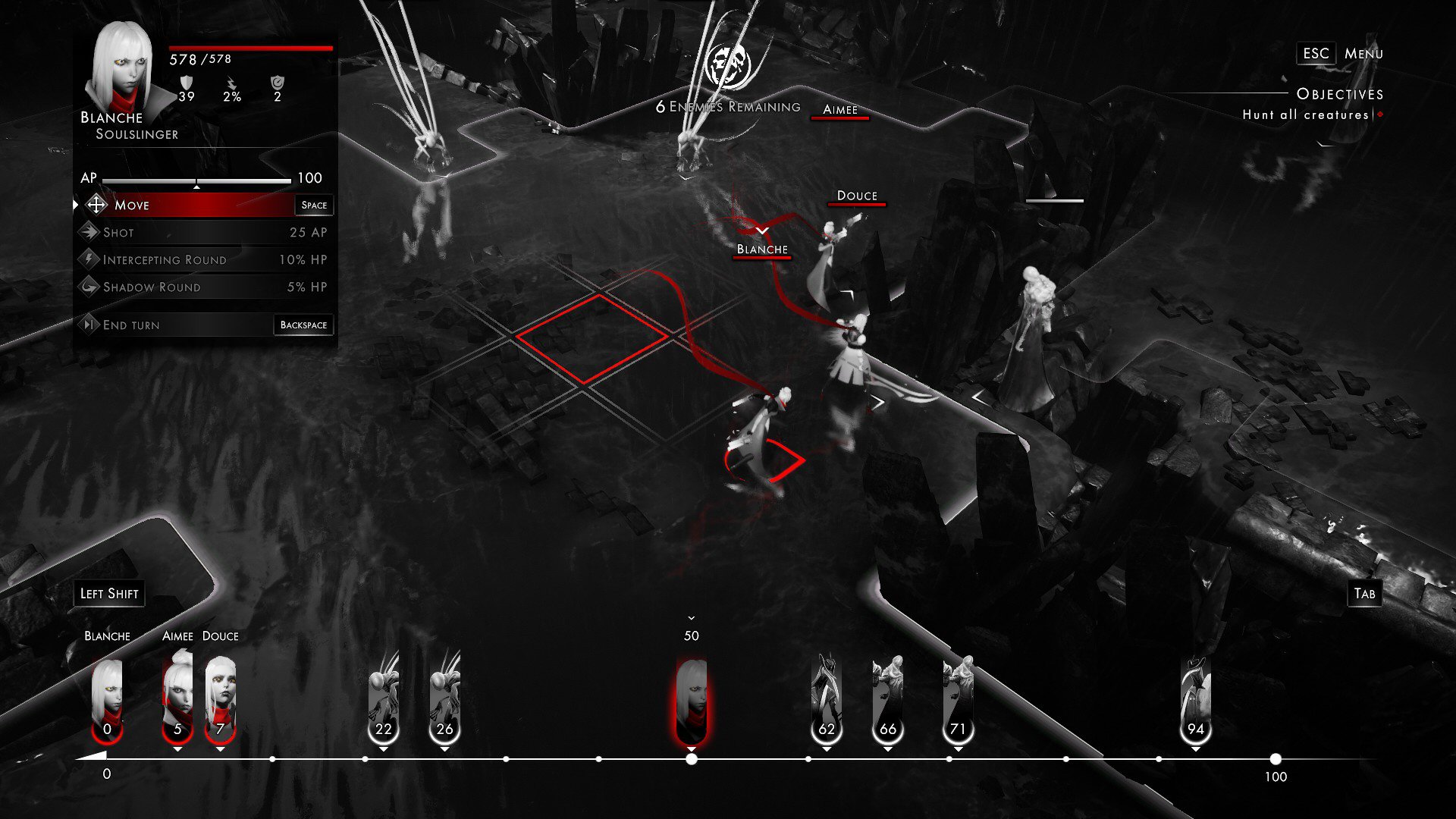
This brings me to the combat timeline mechanic. At all times during missions, we see a combat timeline at the bottom of the screen which tells us whose turn is next and how many time units away is everyone’s turn happening at. Some skills allow us to push enemies further along the timeline to make their turn come later or to buff ourselves or our allies to make our turns come sooner. So for this reason, the turns taken are quite dynamic and constantly change. You never see the ‘Enemy Activity’ or the equivalent happening, because enemies could take their turn straight after one of our units and vice versa.
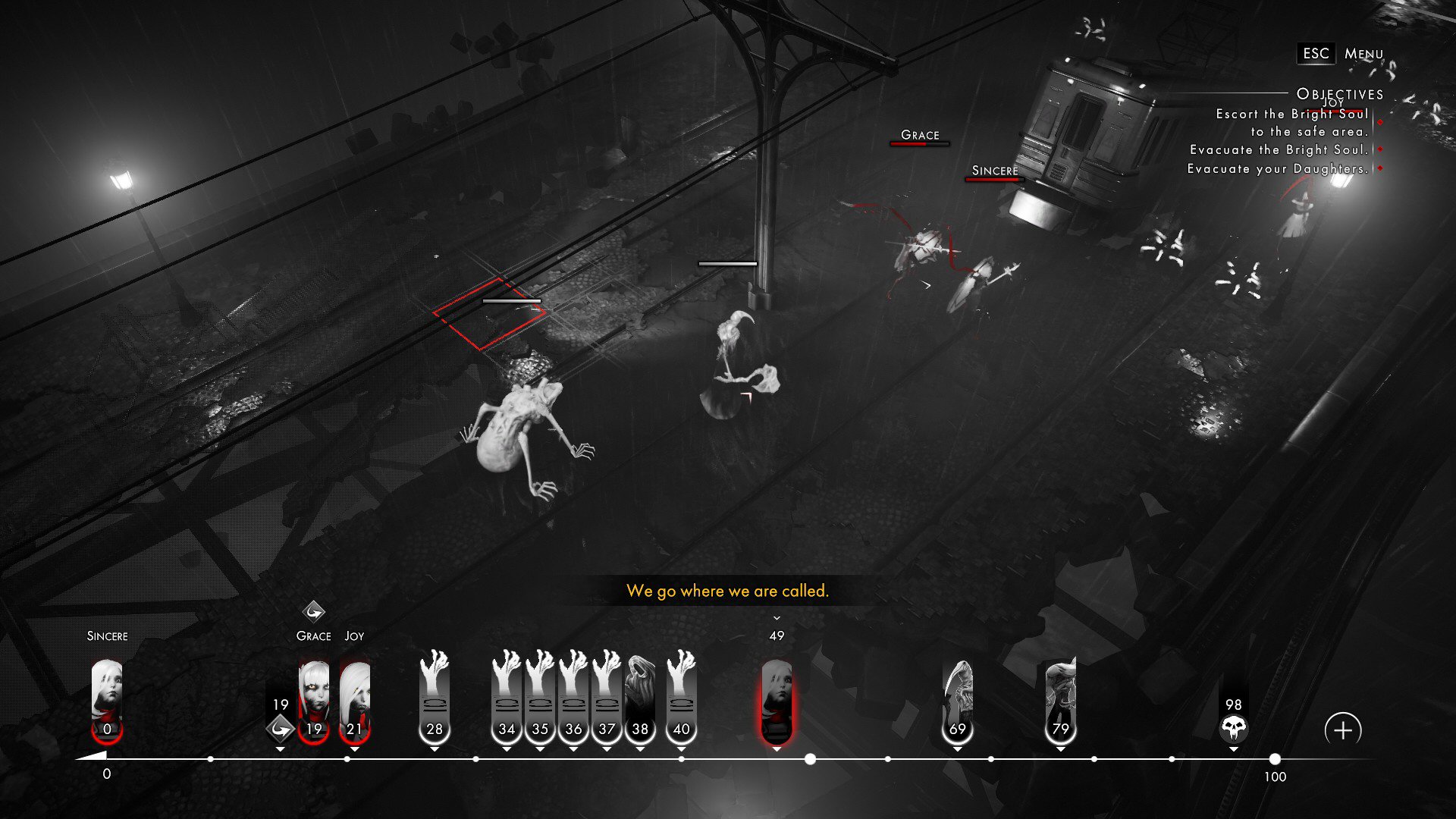
New enemies often spawn in battle as well, and most times we are heavily outnumbered. The game can be very challenging and even seem unfair on occasions, but it offers many ways and strategies to allow us to beat the odds and come on top despite situations that might seem unfair. And for this reason, it’s also very good at making us learn from our mistakes and feels satisfying when we do pull the victory from the jaws of defeat.
The game offers two difficulty modes: Dream and Nightmare, although be prepared that both of them are quite challenging and require patience and persistence. I played on the Dream difficulty and felt it was reasonable. On Nightmare mode, the daughters don’t heal up between the in-game days, and so you’d need to sacrifice them more often in order to boost up other daughters. On the Nightmare mode you’d do a lot more grinding, so I personally didn’t find myself wanting to go through with it as it just means it would take much longer to go through the campaign.
The only part of the game I was heavily disappointed in was the final boss. Without giving any spoilers, I thought this boss was a very cheap difficulty spike that encouraged nothing more than to grind more. When the missions leading up to him feel more or less easy, and even his first form is a cakewalk, only then for his final form to appear and pull every unfair move out of the book, it just feels like a middle finger to the player. The boss would often do 4-5 actions in a turn before any one of your daughters gets to have a go, and on top of that, he pushes every daughter back along the turn timeline, so at times you could be sitting there and watching the boss do 10-15 actions in a row without getting a chance to actually play the game. Every other boss until that moment had very interesting mechanics and was pulled off flawlessly and the game truly was all about strategy, only then to throw it all out the window. A terrible end to an otherwise amazing game.
Presentation
The most noticeable thing about the game’s presentation is its dark and melancholy visual style. Being entirely in greyscale with only some elements of red in places, it’s a style that feels very atmospheric and fits the dark story the game has. It gives a sense of ruin and hopelessness and an otherworldly mystery. I think some of the environments could’ve been a bit better looking rather than simply being what looked like an interior of a rocky cave, but it’s only a minor criticism.

The look of the daughters is superb. Despite all of them being clones, somehow each one feels different while only having a different hairstyle.
The UI is very easy to navigate and shows all information clearly. For any new bonuses or unlocks, it clearly indicates it with an icon so to draw player’s attention to it.
There are cutscenes and voice acting present, particularly during story moments. These usually occur after beating a boss. They are done well, and the overall voice acting is pretty good. Although some one-liners occurring during missions can get very repetitive and a tad annoying, such as hearing the same line whenever a certain type of enemy spawns and hearing it in every mission.
I have somewhat mixed feelings on the music. On the one hand, the game has some really amazing music tracks, particularly the main menu theme and all the music playing in boss fights. But then there are also some very annoying and jarring tracks that play in some regular missions, such as the one playing at 8:43 part in the gameplay video I posted at the start of this review.
Here is one of the amazing music tracks playing during one of the boss fights:
Verdict
I really enjoyed the gameplay of Othercide and how much importance it placed on being tactical and planning your every move carefully, as well as keeping in mind the metagame as well. It’s a challenging game and I’d mainly recommend it to those who enjoy tough tactical situations, with some mechanics being similar to an XCOM formula and some being new and totally unique.
The story and presentation style help to amplify the overall experience and fit well with the concept of facing dangerous odds. The game always makes us feel outnumbered and disadvantaged, and it always feels rewarding when we overcome those odds. As mentioned earlier, the final boss was the only part of the game I strongly disliked, but it wouldn’t be fair to say that it ruined the entire experience for me.
Overall, it’s a great turn-based tactics game, but it’s not for everyone. It requires patience and persistence in the face of setbacks, and some repetition too. It is a bit too expensive at its full price and is better to pick up on a small discount, however the game shows quality in every aspect, especially in the gameplay, and for this reason I’ll give it a ‘Save’ rating.

